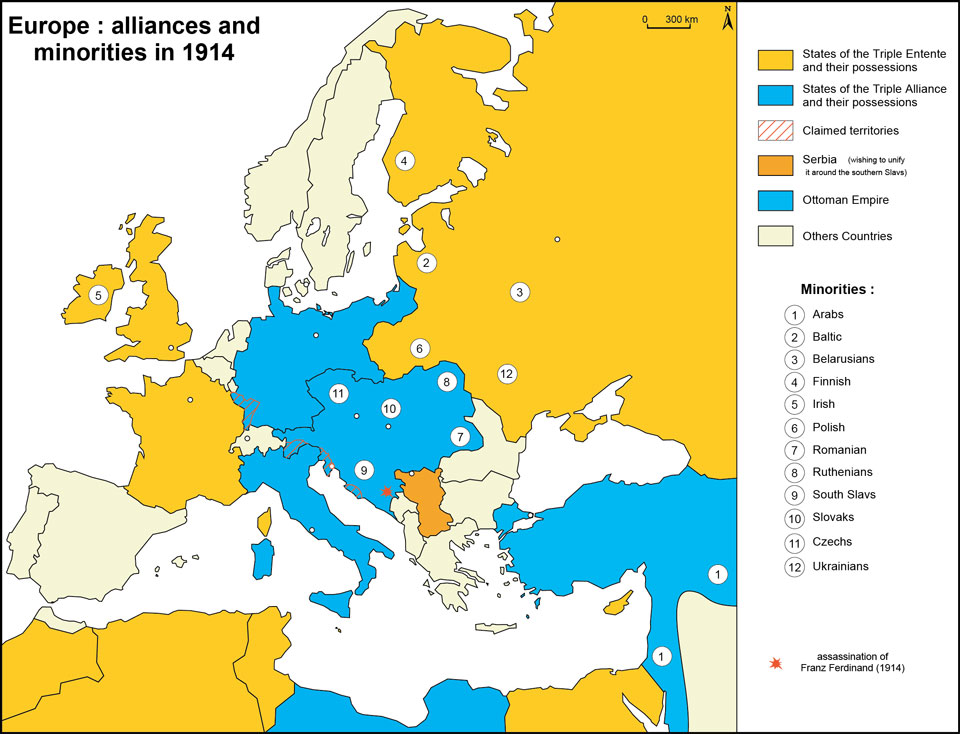Between early August 1914, when the war started, and 1916 over 150 men from St James-the-Less had joined the armed forces and gone to war, nine were reported dead and numerous men injured.
By the time the war ended, on November 11 1918, over four years after it started, 30 men from St James-the-Less were reported killed. In towns all over East Lancashire memorials were built to remember the terrible sacrifice of life. In Rossendale alone over 675 men were reported killed and countless others came home injured. The Great War, as it was known at the time, led to one of the greatest losses of life in the world.
- Over eight million military personnel died
- Over 28 million military personnel were injured or lost
- Unknown countless millions of civilians died or were injured.
Almost 60% of the military personnel involved were casualties, i.e. killed, injured or lost.
It is estimated that during the war over 50 million men, women and children died, or were injured or lost in, what was called at that time, The Great War.
We can only guess at the numbers after the war of deaths and injuries caused by the war.

So what led up to the war that caused so many terrible casualties across Europe?
The reasons why so many countries fought in this war are complicated. The causes at the heart of it were power and wealth. European nations including Great Britain, Germany, Austria-Hungary, Russia and France were for many years competing against each other for more power and wealth. This led to the rise of nationalism, which simply means a nation putting its own interests first.
Over thirty years before the Great War started, Germany, Austria-Hungary and Italy signed an agreement called the ‘The Triple Alliance’. These three nations were looking after their own interests by helping each other and so protecting their power, wealth and interests against the competing power and influence of France and Russia.
Great Britain at the time was a ‘super power’. It had a very wealthy British Empire that covered the world and included countries as far flung as Australia, India and Canada. It was the greatest Empire the world had ever seen, controlling over a quarter of the land in the world and ruling over a fifth of the world’s population.
The British leaders became increasingly worried about the rise of the power of Germany, a nation that wanted to control lands around the world and become a super power to rival Great Britain. Because of this threat from Germany, Great Britain formed its own alliances with France and Russia. These became known as The Triple Entente.
Nationalism was seen in many different ways, but one ordinary way that nationalism is still present today is in the nation’s songs: in Germany the national anthem is ‘Deutschland Uber Alles’ meaning: ‘Germany Above All Things’ while in Britain, Rule Britannia’ is sung: ‘Britannia rules the waves’. In the years leading up to the war the Royal Navy had the largest fleet in the world.
So, were wealth, power and nationalism the only causes of the war?
No, although these were the three main causes, there were factors and one very important one was militarism, which means a nation should maintain strong military forces and be prepared to use it to defend its national interests. The fierce rivalries between these six nations over power and wealth led them to makes their armed forces bigger and stronger. These six nations were facing each other and nobody was backing down.
- By 1914 Germany had 2.2 million men ready to fight, while Great Britain had only 700,000.
- Great Britain had 185 warships, twice as many as Germany. The Royal Navy ruled the waves!
So what event started the war?
The spark that set Europe on fire came on June 28 1914 when Arch Duke Franz Ferdinand, heir to the Austria-Hungary throne, was assassinated in Sarajavo, Serbia. Within four weeks the death of this one man led to the start of the First World War.
Because of alliances between different nations, the most powerful European countries followed each other into the conflict.
- Austria-Hungary declared war on Serbia on July 28 1914 four weeks after the assassination of Arch Duke Ferdinand in Serbia.
- Russia defended Serbia against Austria-Hungary, so Germany declared war on Russian on August 1.
- France joined the war on the side of Russia on August 3.
- Great Britain declared war on Germany on August 4.
- The Ottoman Empire (modern day Turkey) made a secret treaty with Germany on August 2 and declared war on Russia on October 29 1914.
- Italy did not join in the war on the side of Germany and Austria-Hungary, but in May 1915 joined in on the side of the Allies.
As more countries joined in the war, different alliances were formed. Some countries, such as Denmark, Spain and Sweden were neutral and kept out of the war; others were first neutral and later joined in. The United Stated of America was neutral until 1917 when it joined in on the side of The Allies. By 1918, over 27 nations from across the world had become involved in the war. That is why it is known as a World War.
When Germany declared war In August 1914, German emperor, Kaiser Wilhelm II told his troops, ‘You will be home before the leaves have fallen from the trees.’ In Britain, the troops were told they would be home by Christmas. Nobody could guess how long the war would last and nobody could ever imagine what casualties would be suffered by countless small communities around the world, like the parish community of St. James-The-Less, Rawtenstall.
How did the war end?
The Russian Revolution caused Russia to withdraw from the war in December 15 1917. In 1918 the British, French and American armies were finally escaping from the trenches of the Western front and pushing the Germans back towards their border. As the Allies final push started in October 17 1918, the alliance between the Central Powers began to collapse. Turkey signed an armistice at the end of October and Austria-Hungary signed on November 3. An armistice is an agreement to stop fighting. The German military began revolting against their leaders and the German Kaiser (King) abdicated on November 9 and went into exile. A German Republic was declared and at 5 o’clock on the morning of November 11 an armistice between Germany and the Allies was signed in a railroad car in a French forest near the front lines. The agreed time for fighting to end was 11 a.m. November 11.
Even up to the 11 a.m. ceasefire soldiers were still being killed. On November 11 there were 10,944 casualties of which 2,738 men died. The last man to die was an American who died just one minute before the 11 a.m. ceasefire. He was killed charging German soldiers who were waiting for the fighting to end.
When the fighting ended the soldiers on all sides went home. The Germans were forced to release all the allied prisoners of war immediately.
In England, as in other countries, the dead of the war were commemorated and war memorials to the dead of the Great War were built in every city, town and village. St James-the-Less is one of the only three churches in Rossendale that did not have a war memorial commemorating those parishioners who gave their lives.
In November 2015 the parishioners of St James-the-Less who gave their lives in World War One had the their names carved in stone on the parish’s own war memorial.

Leave A Comment